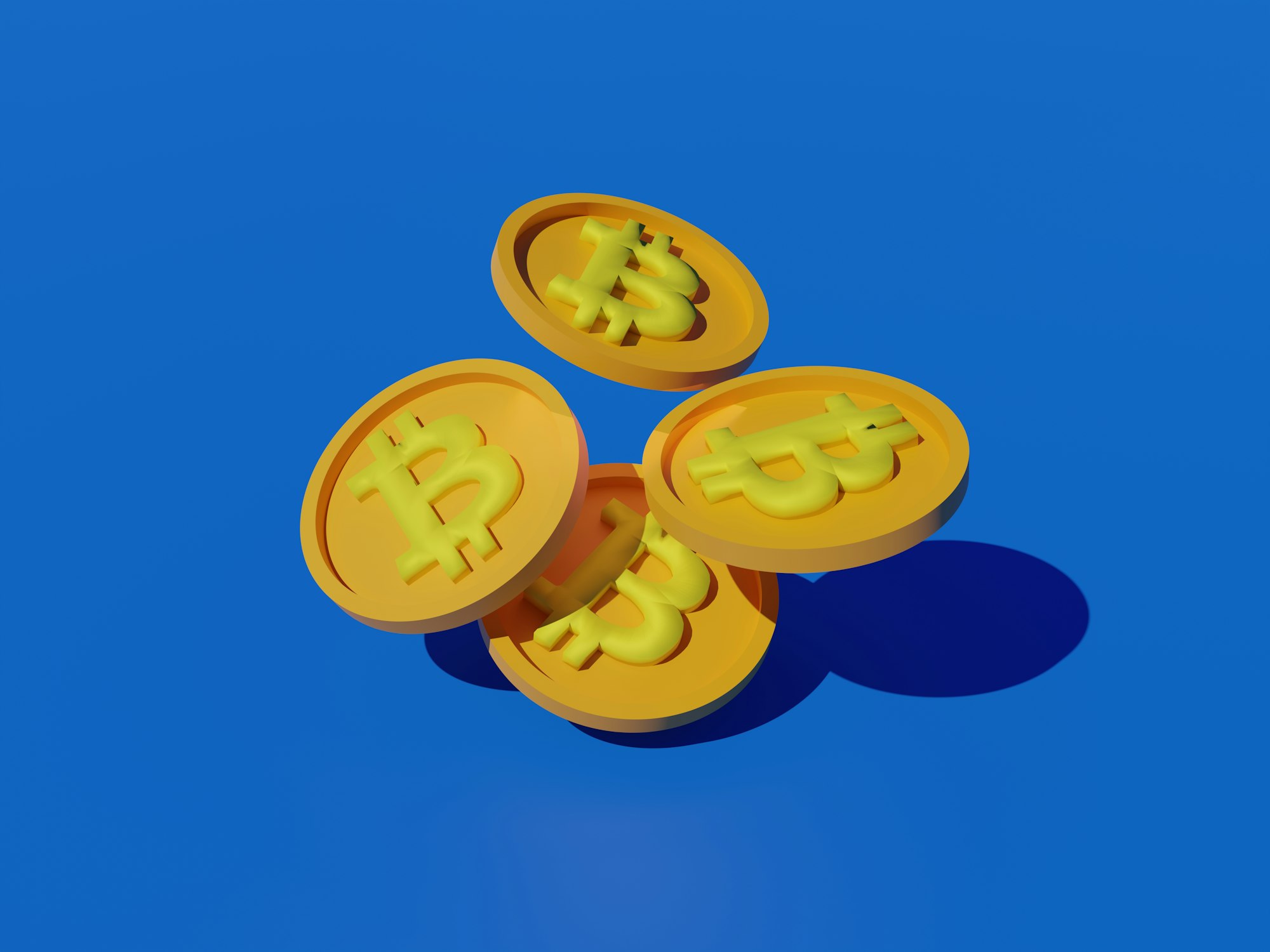CBDC and the Future of Monetary Sovereignty
Are we ready for a digital revolution in our monetary system? The IMF's latest research paper, "To Demand or Not to Demand: On Quantifying the Future Appetite for CBDC," delves into the potential impacts of introducing a CBDC on economic dynamics.

Are we ready for a digital revolution in our monetary system?
The International Monetary Fund's (IMF) latest research paper, "To Demand or Not to Demand: On Quantifying the Future Appetite for CBDC," delves into the potential impacts of introducing a central bank digital currency (CBDC) on economic dynamics.
From the share of CBDC in total money to the effect on bank profitability, this groundbreaking paper poses thought-provoking questions and presents a novel model for simulating the integrated balance sheets and financial flows of banks, a central bank, and private sector individuals to conduct CBDC counterfactual analyses.
Will the introduction of CBDC lead to a significant shift in our monetary system?
Read on to find out.

First, let's understand the following topics:
Central Bank Digital Currency or CBDC is a digital version of traditional physical money issued by a central bank, such as cash or coins. It is designed to be used by the general public and businesses, just like physical money, but in digital form.
Bank deposit rate-to-policy rate spreads refer to the difference between the interest rates that banks charge on deposits and the interest rates set by the central bank for its policy rate. This spread can indicate the level of competition in the banking system.
Monetary policy pass-through refers to the extent to which a central bank's monetary policy decisions (such as setting interest rates) directly impact the economy through changes in lending and borrowing rates, inflation, and other economic indicators.
Counterfactual analyses are simulations or theoretical models that are used to study what would happen in an alternative scenario or under different conditions. They allow researchers to compare actual outcomes with hypothetical outcomes.
CBDC counterfactual analyses are simulations or theoretical models used to study the potential impacts of introducing a central bank digital currency (CBDC) on economic dynamics. These analyses are used to answer questions about the possible adoption rate of CBDC, the impact on bank deposit rate-to-policy rate spreads, the rise in bank reserve borrowing needs, the effect on the bank and central bank interest income and expenses, and the extent of monetary policy pass-through.
Short Summary
The research paper discusses the potential impacts of introducing a CBDC on economic dynamics. The authors use a novel model to simulate the integrated balance sheets and financial flows of banks, a central bank, and private sector individuals, and conduct CBDC counterfactual analyses to answer five questions: the share of CBDC in total money, the impact on bank deposit rate-to-policy rate spreads, the rise in bank reserve borrowing needs, the effect on bank and central bank interest income and expenses, and the extent of monetary policy pass-through. The model's primary conclusions are that the share of CBDC in total money will depend on how CBDC is perceived, bank deposit-policy rate spreads may fall and monetary policy pass-through may strengthen, bank profitability may decline and bank reserve borrowing needs may rise.
Long Summary
The research paper discusses the potential impacts of introducing a central bank digital currency (CBDC) on economic dynamics. The paper poses five questions to consider: the share of CBDC in total money, the impact on bank deposit rate-to-policy rate spreads, the rise in bank reserve borrowing needs, the effect on bank and central bank interest income and expenses, and the extent of monetary policy pass-through. The authors present a novel model that simulates the integrated balance sheets and financial flows of banks, a central bank, and private sector individuals to conduct CBDC counterfactual analyses. The model's primary conclusions are that: CBDC-in-total-money shares depend on how CBDC is perceived, bank deposit-policy rate spreads fall and monetary policy pass-through may strengthen, bank profitability declines and bank reserve borrowing needs rise.

The idea of introducing a CBDC has been discussed since 2015-17, with central bankers highlighting potential benefits such as strengthening the monetary policy toolkit, making financial systems safer, and increasing monetary policy pass-through. Various central bank reports have examined the rationale for CBDCs, which include increasing competition in banking systems, reducing operational risks, fostering financial inclusion, combating illicit use of money and maintaining monetary sovereignty. The literature on the economic implications of CBDCs can be grouped into four categories: New Monetarist (NM) models, Overlapping Generations (OLG) models, Dynamic Stochastic General Equilibrium (DSGE) models, and other models. These models focus on the effects of competition and deposit-policy rate spreads, real economic effects, cross-border spillovers, adoption, and take-up. However, these models do not address the five questions posed in the paper, and most of them treat banks as intermediaries instead of as money creators.

The authors present a novel model that simulates the integrated balance sheets and financial flows of banks, a central bank, and private sector individuals to conduct CBDC counterfactual analyses. The model's primary conclusions are that:
- CBDC-in-total-money shares depend on how CBDC is perceived, and the estimated adoption rate ranges between 5-25 percent for the U.S. and 1-20 percent for the Euro area.
- Bank deposit-policy rate spreads fall, with the average bank deposit rate rising by up to a marginal 20 bps when introducing a CBDC in the U.S.
- Bank reserve borrowing needs rise, with non-banks adopting CBDC increasing bank reserves borrowing needs between USD 1.1-4.8 trillion in the U.S. and EUR 0.2-2.8 trillion in the Euro area.
The paper also finds that the introduction of CBDC could significantly impact the central bank's balance sheet, as the increase in reserves borrowing would lead to a large expansion of the bank's balance sheet. This effect has implications for collateral availability and the central bank's collateral eligibility criteria. Additionally, the paper does not examine the impact of this funding shift on credit supply by banks. The paper also notes that the model's parameters can be adjusted to reflect different country-specific conditions, such as competition levels and people's preferences for central bank money. Overall, the paper provides a comprehensive analysis of the potential economic implications of introducing a CBDC, and highlights the importance of considering the design and perception of CBDC in order to fully understand its potential impact on the economy.

In summary, the research paper presents a model for simulating the integrated balance sheets of banks, non-bank agents, and the central bank, in order to explore the potential effects of introducing a central bank digital currency (CBDC) in the U.S. and the Euro area. The results of the model show that the CBDC-in-total-money shares for the U.S. and the Euro area may reach 25% and 20%, respectively, as upper bounds. The study also found that equilibrium deposit rate-policy rate spreads fall, though the impact is not substantial for the U.S. and the Euro area. Additionally, the deposit volume effects are found to be economically significant, deposits may fall by USD 4.8 trillion in the U.S. (-25%) and by EUR 2.8 trillion in the Euro area (-21%). The study also found that the bank's net profits and dividend payouts would drop and the central bank's seigniorage income would behave non-linearly depending on the level of the CBDC interest rate.
Be the one who brings valuable insights to the table by sharing this post.
Want to be part of a community of informed and engaged individuals? Follow us on social media @Facebook and @Twitter